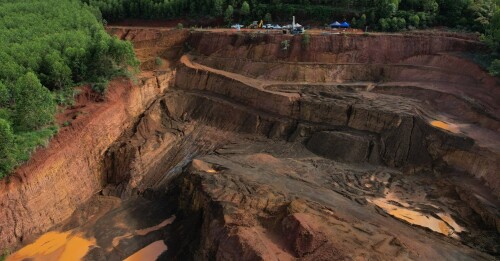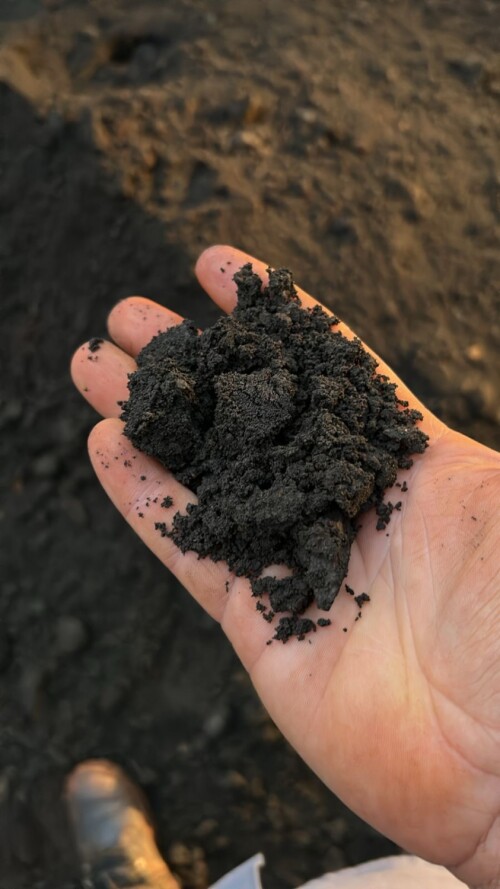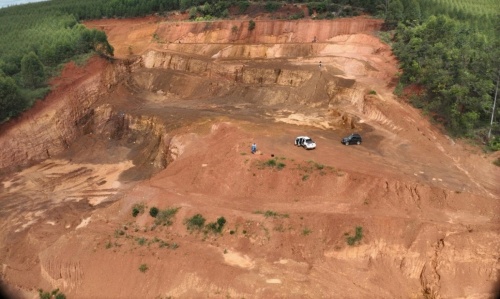Project Overview
The Florália Hematite DSO Iron Ore Project is situated within a prolific iron ore mining region in Minas Gerais, Brazil’s largest iron ore producing state, 67 kilometres east of the capital city of Belo Horizonte and 11 kilometres northeast of the mining town of St Bárbara. Upon successful exploration and development, Florália DSO has the potential of producing hematite direct shipping ore (DSO) through conventional drill and blast open pit mining, followed by crushing and screening to produce lump and fines products for the domestic market and/or shipping to overseas markets.
There are seven significant iron ore mines and two rail sidings within 20 kilometres radius from the project, all of which are part of the steel hub district in Minas Gerais and potential purchasers of the iron ore product, providing a local market requiring minimal transportation. Minas Gerais has excellent infrastructure including roads, rail, power, water, communications, airports and skilled mining personnel.
Max’s technical team has significantly expanded the Florália hematite geological target ranging from 8 to 12 million tons at 58% Fe upgraded to 50 to 70 million ton at 55%-61% Fe.
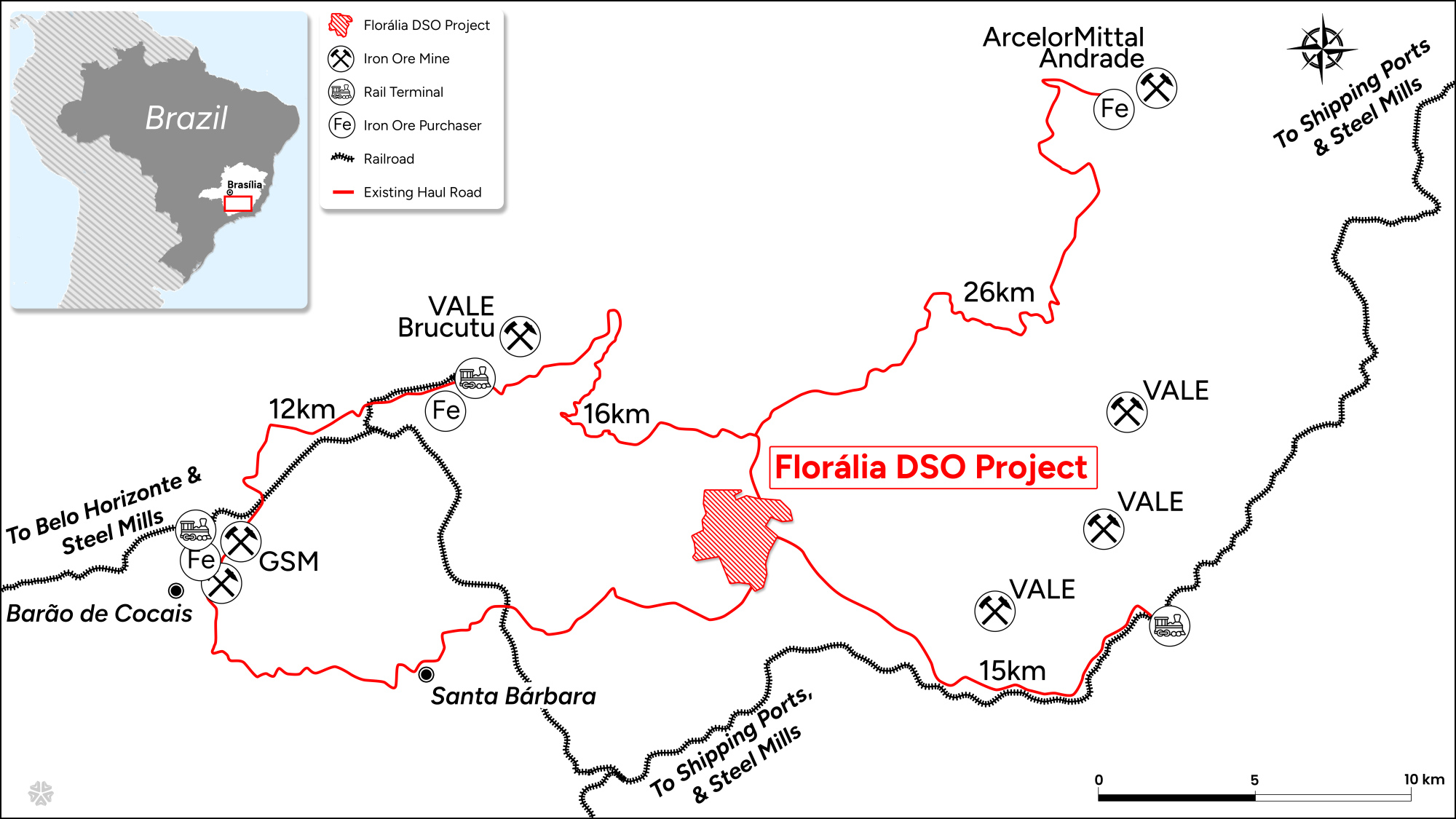
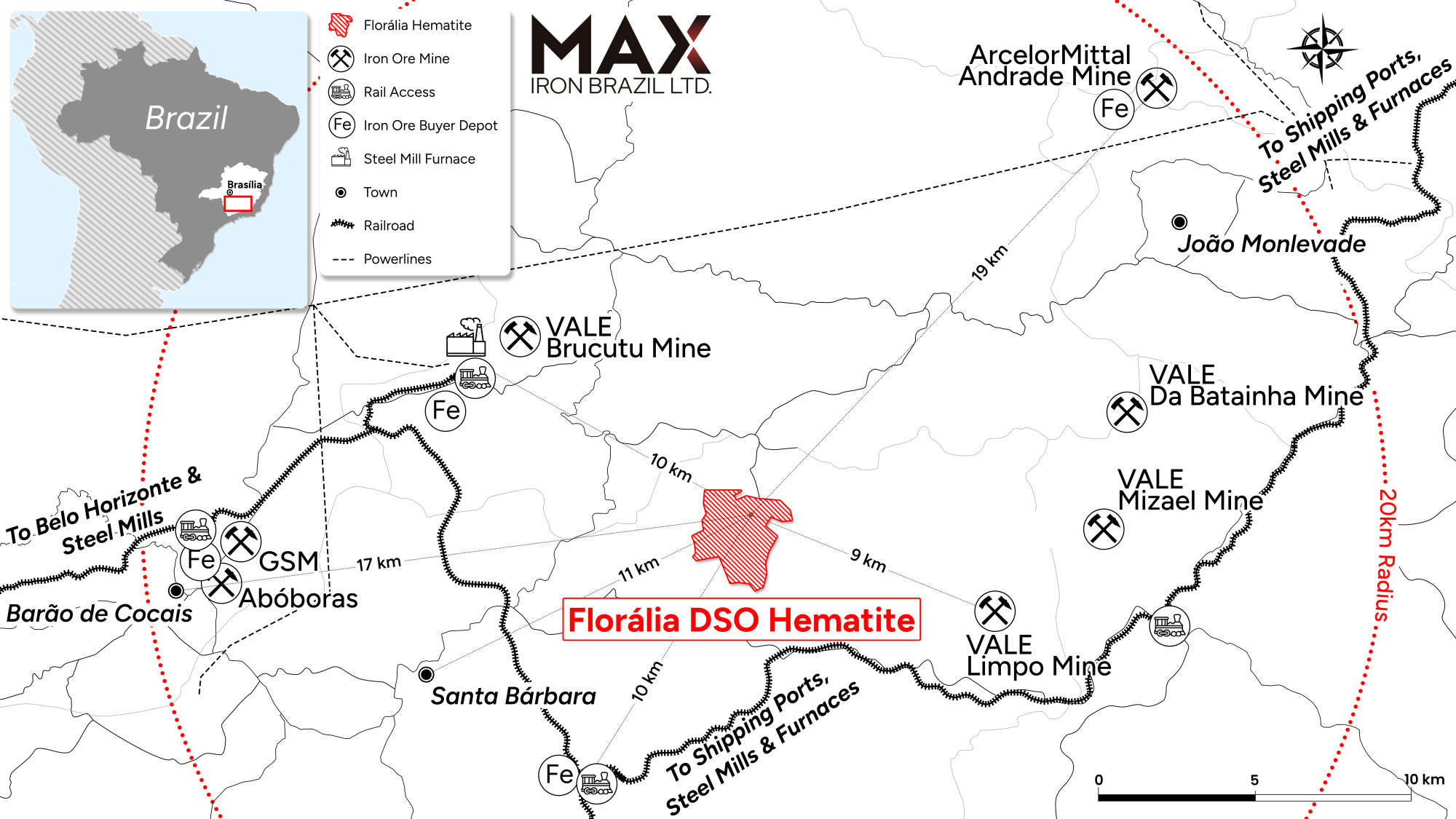
Direct Shipping Ore (DSO)
High-grade hematite (>60% Fe) is often referred to as “Direct Shipping Ore” or “DSO” because it is mined and beneficiated using a relatively simple crushing and screening process before being exported for use in steel mills. The appeal of DSO lies not only in its high iron content but also in small environmental footprint, lower greenhouse gas emissions from dry processing and lower electrical power inputs, no requirement for water or environmental sensitive tailings dams.
Unlike its lower-grade counterparts (~30% Fe of lower grades of hematite or magnetite), DSO generally requires no complex beneficiation or treatment other than the dry mechanical processes of crushing and screening to prepare it for export. The simplicity of the DSO process is a significant operating and capital cost advantage, circumventing removing large volumes of earth and the need for costly mega processing facilities that other lower-grade ores can necessitate. This simplicity also translates to a shorter time between the mine and steel mills across the world, appealing to producers and end-users alike.
From a geological standpoint, DSO deposits located nearby infrastructure are relatively rare and often formed through the chemical alteration of banded iron formations (BIFs) under specific environmental conditions. The global reach of DSO is facilitated by established shipping infrastructure located nearby DSO deposits which enables DSO to be transported from mines in Australia and Brazil, the world’s largest DSO producers.
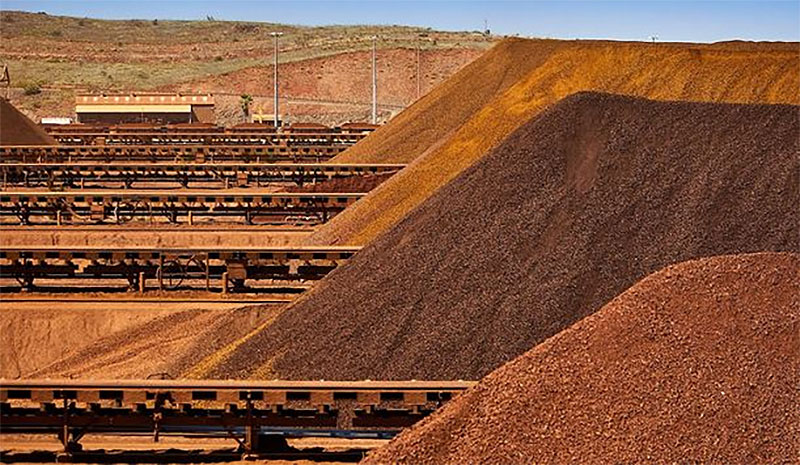
2024 Exploration
Inaugural 2024 Exploration Produces Early Success
Max’s exploration campaign commenced September 2024 and has included:
- Hi-Res Drone MAG/LiDAR 140-line-km/50m identified new 1,000m by 1,500m high grade zone; correlating with field activities and extrapolates from the 160m-by-160m historic open cut
- Identified targets to be drilled
- Hematite DSO Geological Target: from 8 to 12mt at 58% Fe to 50 to 70mt at 55 to 61% Fe* from surface and open in all directions; important to note, the Florália hematite deposit has low grades of phosphorous
2025 Exploration
The 2025 exploration program at Florália is currently underway:
- Bulk samples for certified pilot plant test and product samples for offtake
- Commenced surveys environmental and logistics
- Commenced auger drill program (approx. 800m)
- Commenced diamond drill program (approx. 1,000m)
Objectives of this year's exploration are:
- Exploration target upgrade; inaugural Mineral Resource/Reserve
- JORC feasibility study (1.5mtpa production)
- Offtake Qualification
- File Mining Permits
- Hematite DSO iron ore asset growth
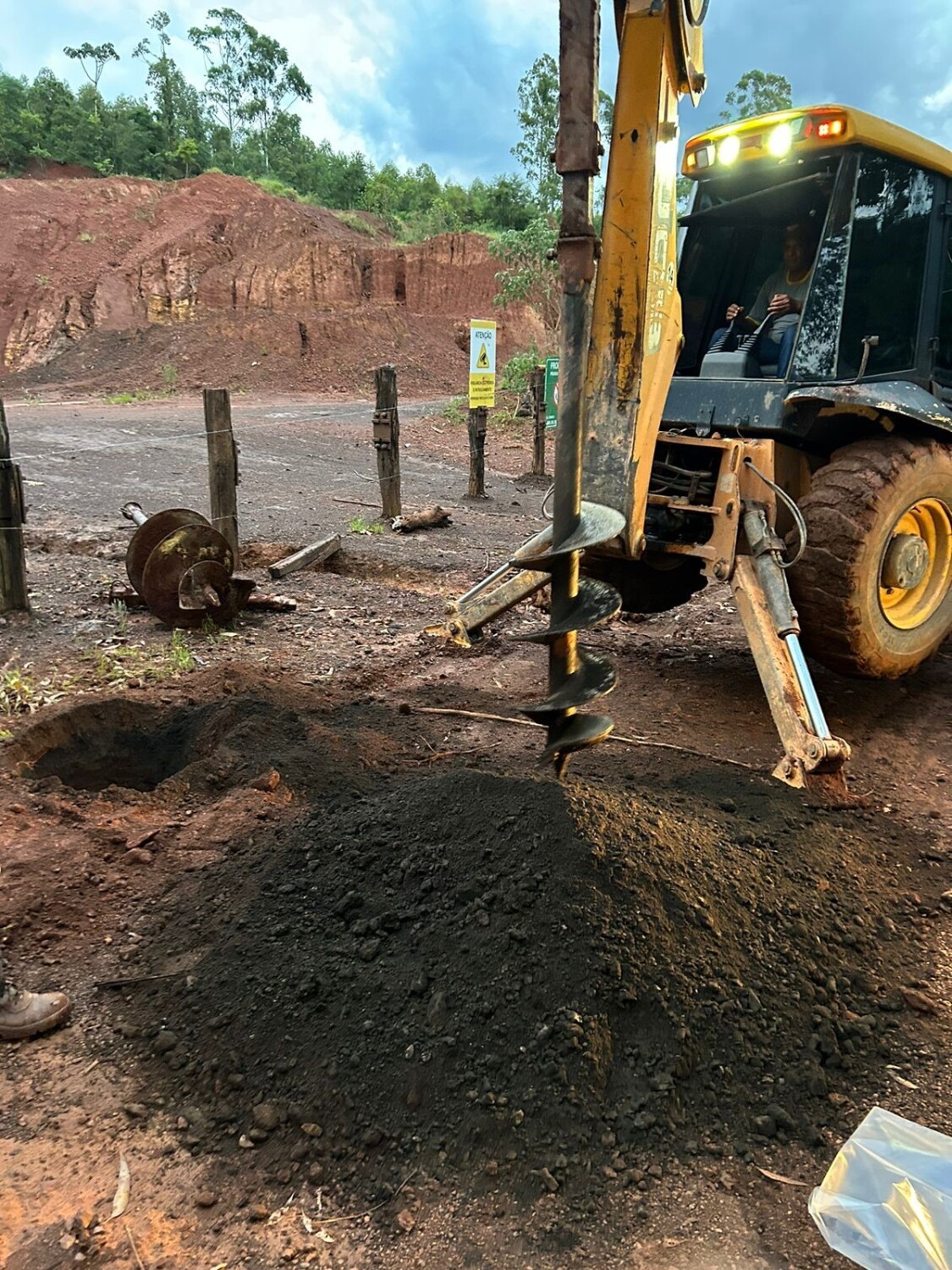

Looking Forward
2026 Exploration Plans:
- Approvals to mine and pre-development
- No Requirement for: native title or water permit or mining operations accommodation or tailings dams
- Build the DSO inventory and target DSO properties
*Max cautions investors the potential quantity and grade of the iron ore is conceptual in nature, and further cautions there has been insufficient exploration to define a mineral resource, and Max is uncertain if further exploration will result in the target being delineated as a mineral resource. Hematite mineralization tonnage potential estimation is based on in situ high-grade outcrops and interpreted and modelled magnetic anomalies. Density value used for the estimate is 2.8t/m³. Hematite sample grades range between 55-61%Fe. Hematite mineralization tonnage potential estimation is based on in situ hematite outcrop interpreted and modelled magnetic anomalies. Density value used for the estimate is 2.5t/m3. The 58 channel samples were collected for chemical analysis from in situ outcrops in previously mined slopes of industrial materials. Channel samples weighed in average 14 kg. Chemical analysis was performed at ALS Laboratories. Metal Oxides are determined using XRF analysis. Fusion disks are made with pulped samples and the addition of a borate-based flux. Max did not insert standards or blanks in the assay stream and is relying on ALS's lab QA/QC.
Project Image Gallery
